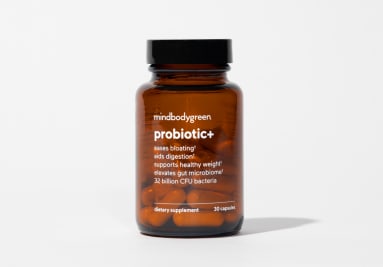
Image by Trinette Reed / Stocksy
January 17, 2023
Our editors have independently chosen the products listed on this page. If you purchase something mentioned in this article, we may
Buying things has never been easier. There’s no limit to the number of items you can have sent to your front door—sometimes at rapid speed. As a result, many homes are packed with accumulated belongings; unless, of course, you’re a minimalist.
While minimalism’s origins began in art, the movement grew to include lifestyle choices as well. One of the goals of those seeking this way of living is to intentionally reduce possessions and only keep those things that bring value and happiness. By surrounding ourselves with items that serve a purpose, the idea is that we’ll have more time and energy to devote to other areas of our lives, like spending time with loved ones. This intentional way of living can also reduce clutter in a home, save money, and lessen our impact on the environment.
Advertisement
This ad is displayed using third party content and we do not control its accessibility features.
From my perspective as a mold remediation expert, minimalist living has another underappreciated benefit Following a “less is more” mantra can improve indoor air quality.
Why minimalism can improve your air quality at home:
We tend to “collect things” throughout our lives. Over time, these belongings will accumulate on shelves, tables, attics, basements, and more, offering increased surface space for dust to settle. The more surfaces there are, the more difficult it can be to eliminate the dust in our homes.
Why is removing dust important? Gravity brings particles like mold spores, mycotoxins, and endotoxins down to horizontal surfaces like floors, door frames, and furniture. So basically, where dust collects, so do these indoor contaminants.
When this layer of particulate matter gets kicked up into the air, it will lower indoor air quality and allow contaminants like mold spores, mycotoxins, and bacteria to enter our bodies through inhalation.
Pro tip
Every year, evaluate your belongings and ask yourself if you truly use each item before deciding whether to keep it or move on. Doing so will stop dust from collecting on your belongings, which ultimately translates to cleaner indoor air quality.
Advertisement
This ad is displayed using third party content and we do not control its accessibility features.
2.
You can choose items that are easy to clean.
We can’t put a bubble around our homes, so it’s inevitable that microscopic particles will enter. Our job is to diligently remove them so that they don’t continue to build up and lower the indoor air quality of our dwellings. One of the top ways to keep our indoor environments safe is through thorough house cleaning.
Living consciously through minimalism involves choosing items with intention and care. A factor that minimalists can consider that will help improve their home health is whether or not the item can easily be cleaned. Opt for nonporous materials like sealed wood, metal, glass, etc., as they can be cleaned more thoroughly.
3.
You’ll have the option to invest in tools to improve air quality.
Another perk of a minimalist lifestyle is the financial benefit. Those opting for this “less is more” lifestyle often save money by whittling purchases down to only those that are necessary and valuable. Over time, these funds can be spent on tools to help improve indoor air quality in a home so that those inside can breathe easier.
The key aspect to consider in making these health-conscious decisions is whether the product can help eliminate microscopic particles from an indoor space.
In my opinion, a few great options include:
An air purifier: A good air purifier will help to remove microscopic pollutants so that they’re not circulating through our indoor spaces and making their way into our bodies. Those looking to invest in an air purifier should ensure that it at least meets HEPA status, but if it can remove more contaminants, that’s even better. Whole-home air purifiers are the best route. These systems are installed at the home’s point of entry and will effectively remove contaminants from the air so that the HVAC system can run efficiently. As an added bonus, they also offer a layer of protection for the HVAC itself by eliminating contaminants before they enter the system.
A HEPA vacuum cleaner: HEPA filters capture 99.7% of particles, down to 0.3 micron in size. This allows HEPA vacuums to actually filter out small particles instead of just blowing them straight back into the environment.
Botanical cleaning products: These products utilize natural ingredients instead of harsh chemicals to deal with contaminants on a surface, making them safer both for our bodies and for the environment. Here are a few top options.
At-Home Testing Kits: Like our bodies, it’s important to regularly check our homes for any issues. Just because we can’t see a problem doesn’t mean it’s not present and negatively affecting our air quality. Using tools like The Dust Test annually can help determine if high levels of contaminants are in the home that need to be addressed.
Having this financial nest egg can also provide resources to properly deal with any issue that occurs in a home that could lower the indoor air quality, like water damage. The sooner a problem is addressed, the better.
Advertisement
This ad is displayed using third party content and we do not control its accessibility features.
The takeaway.
Living in homes packed with layers of particulate matter can negatively affect our wellness. Minimalism has a long list of benefits, and improving our air quality is absolutely on the docket.
Advertisement
This ad is displayed using third party content and we do not control its accessibility features.


